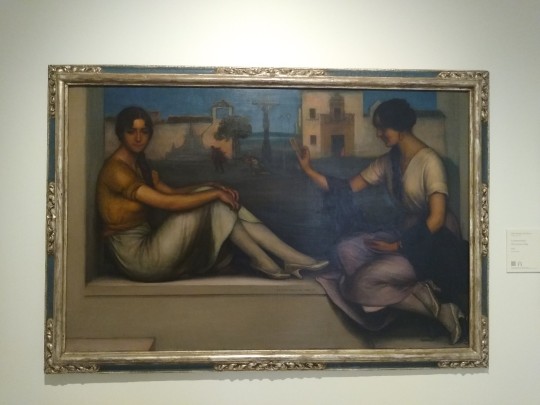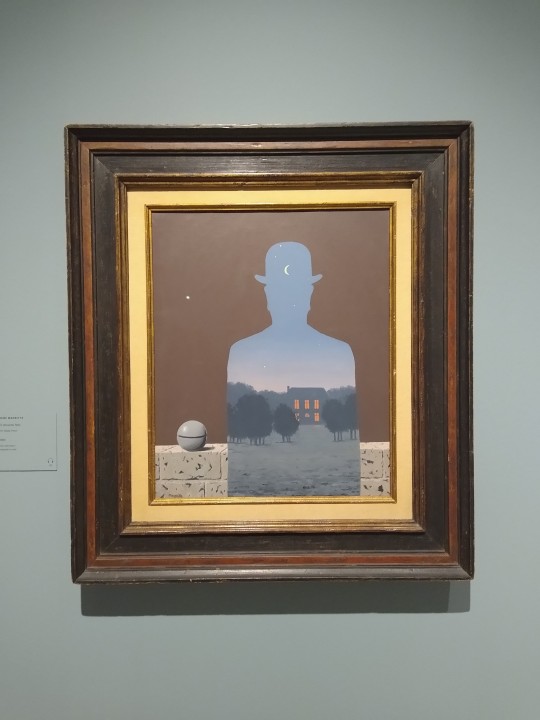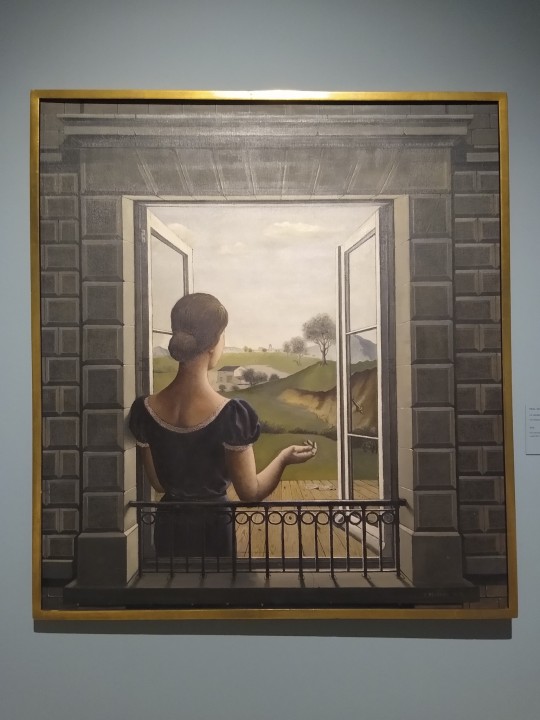#carmen thyssen museum
Text
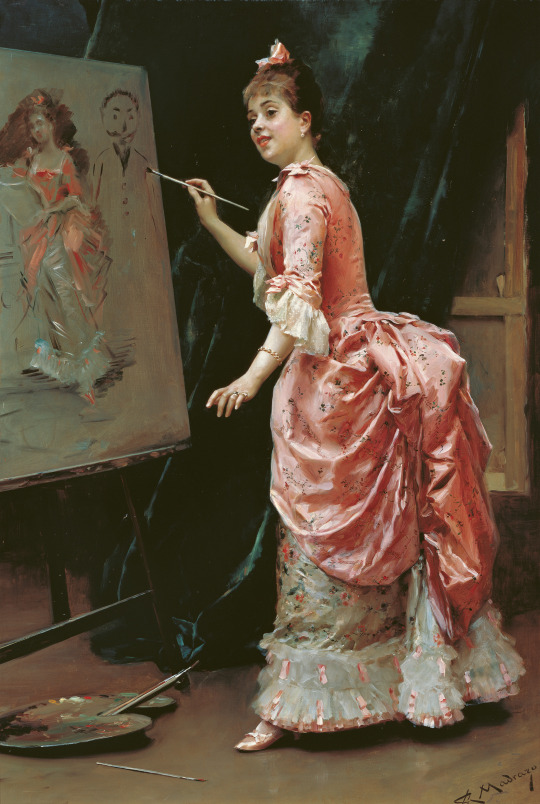
Raimundo de Madrazo y Garreta (1841-1920)
"Model Making Mischief" (c. 1885)
Oil on canvas
Located in the Carmen Thyssen Museum, Málaga, Spain
#paintings#art#artwork#genre painting#genre scene#raimundo de madrazo y garreta#oil on canvas#fine art#carmen thyssen museum#museum#art gallery#spanish artist#female portrait#portrait of a woman#portrait of the artist#pink dress#dresses#clothing#clothes#artist's studio#funny#humor#humour#silly#being silly#1880s#late 1800s#late 19th century#male portrait#portrait of a man
771 notes
·
View notes
Text
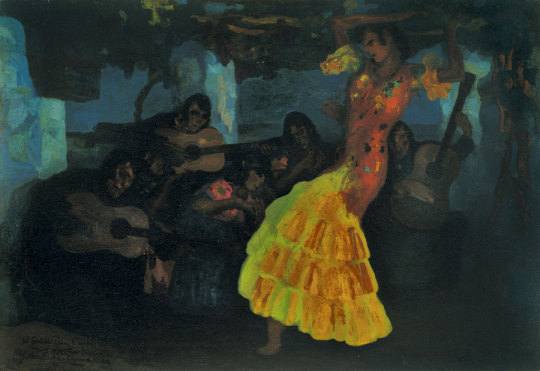
Hermenegildo Anglada Camarasa (Spanish, 1871-1959) • Baile Gitano • 1914 • Oil on board • Carmen Thyssen Museum, Málaga, Spain
Courtesy of Wikimedia Commons
#hermenegildo anglada camarasa#art#painting#fine art#art history#fauvism#hispanic heritage month#dancers in artworks#musicians in artworks#early 20th century art#spanish artist
1 note
·
View note
Text
5 Reasons To Spend Time On The Costa Del Sol During The Colder Months – Simply Shuttles

The southern Spanish region known as the Costa del Sol doesn’t always tend to get talked about much as a place to spend the winter – especially the first few months of a calendar year, after Christmas. But should it be?
Below, we’ve set out just some of the reasons you should give serious consideration to whiling away a few days – or even weeks – on the Costa del Sol during January, February, and into the spring.
There isn’t really such thing as ‘winter’ here…
…well, certainly not as many people across the rest of Europe would understand it. With even January – the coldest month of the year in the region – seeing average daily temperatures of around 17 degrees C, and about five to seven hours of sunshine each day, the Costa del Sol is a wonderfully hospitable spot for a winter break, almost irrespective of what you plan to do here.
It’s an excellent place to golf in the winter
We receive plenty of enquiries about Fuengirola, Estepona, and Marbella golf transfers for the winter here at Simply Shuttles, from people who know all about the Costa del Sol’s gorgeous scenery and excellent facilities for those wishing to tee off in January, February, or March.
With more than 70 golf courses to be found between Torre del Mar and Sotogrande, the region certainly doesn’t leave golfers bored during the (only slightly) chillier months.
It’s a great time to explore the region’s cultural and heritage sites
Even if you do want to spend a bit more time indoors during your trip to the Costa del Sol in the winter, you won’t find a shortage of interesting things to do here.
Many people from abroad come into the region via Málaga Airport, for example, and the city itself serves up stimulating museums, galleries, and other landmarks ranging from the Museo de Málaga and Museo Carmen Thyssen Málaga to the Alcazaba of Málaga and Teatro Romano de Málaga (Roman Theatre). Meanwhile, Marbella presents the likes of the Museo del Grabado Español Contemporáneo (Contemporary Engraving Museum) and Museo Ralli Marbella.
You can even go skiing at this time of year!
It’s not exactly one of the first things that most of us would associate with the Costa del Sol, but a trip to this part of Spain could even take in the Sierra Nevada ski resort, which is the southernmost ski resort on the whole of the continent.
Situated in the Sierra Nevada mountain range in the province of Granada, the resort offers runs for every level of ability, including 19 green runs for relatively cautious skiers, but also 45 blue runs, 53 red, and seven black. And of course, there is the chance to enjoy awesome views across the mountains as you make your way down from the ski slopes.
This could be the time for low-key, stress-free inspiration
Not everyone who visits the Costa del Sol necessarily even comes in order to experience “that” city, resort, bar, golf course, or even art gallery that they’ve heard so much about. Much of the pleasure of being in the region during the first few months of the year can simply be about… taking everything in, at your leisure, in your own time.
The crowds certainly recede in many of the Costa del Sol’s most ‘touristic’ spots come wintertime, and hotels tend to be a lot cheaper as well. These factors can help make the colder months an excellent time to experience the region in a different, slower way, while feeling slightly closer to the more ‘traditional’ Andalucia.
Have we got you a bit excited about what your next trip to southern Spain could be like? If so, don’t forget that when it comes to everything from Benahavis restaurant tours to Marbella golf transfers, our private hire services at Simply Shuttles can help make it all so much easier. Give us a call now, on +34 951 279 117, to book any of our in-demand services for the months ahead.
0 notes
Text

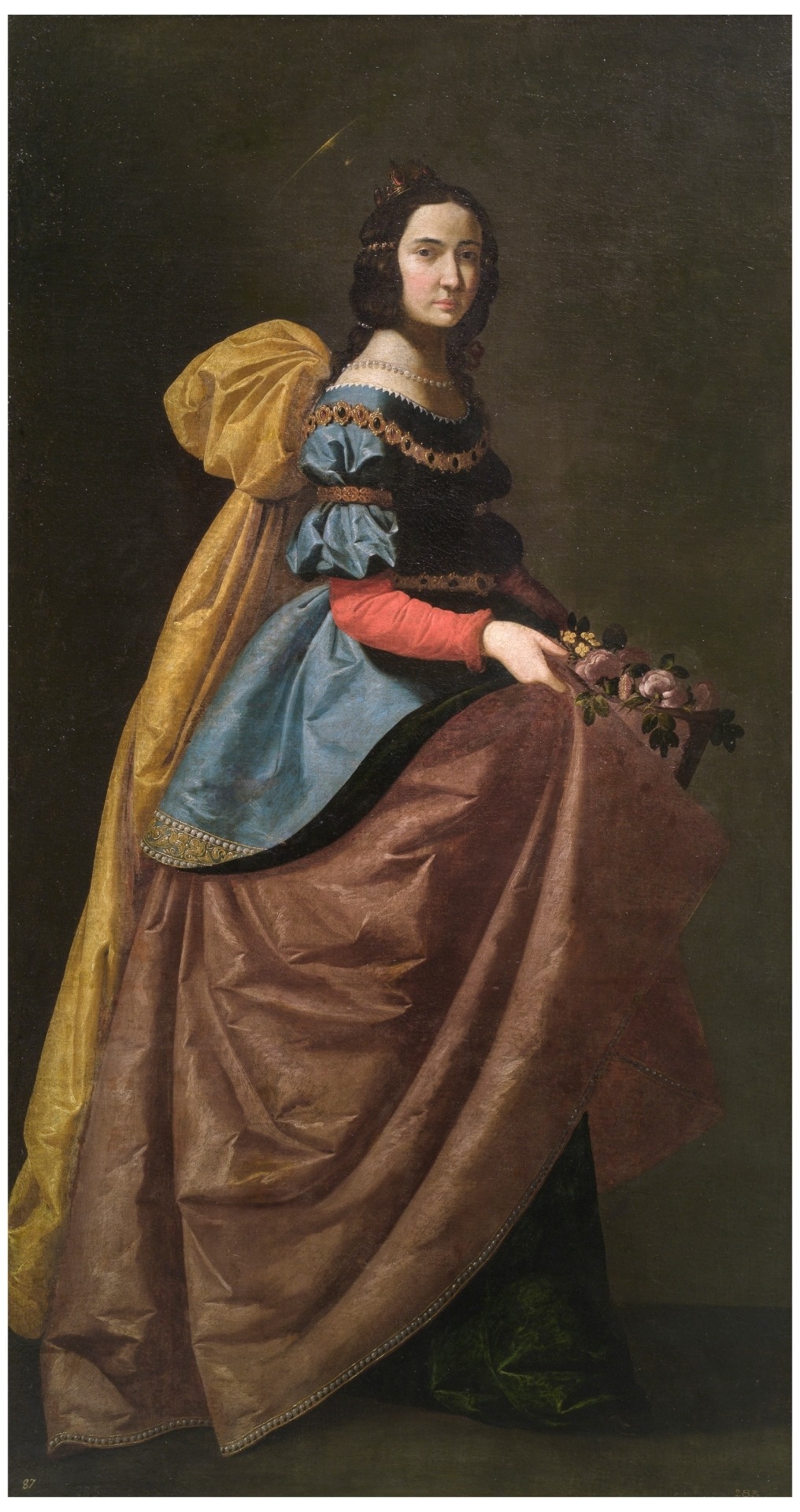

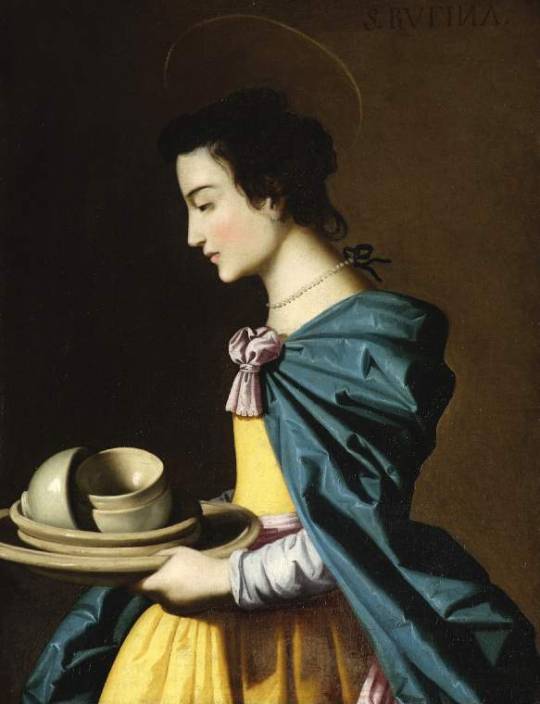
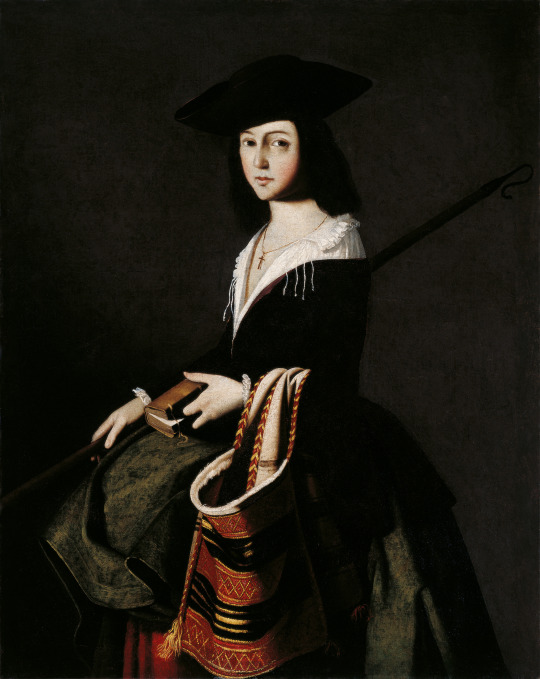
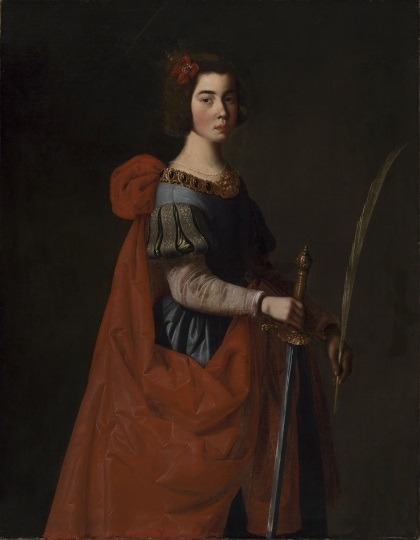
Santas de Zurbarán (1568-1664)
Santa Casilda de Toledo, 1630-1635. Museo Thyssen-Bornemisza.
Santa Isabel de Portugal, c. 1635. Museo del Prado.
Santa Margarita de Antioquía, 1630-4. The National Gallery.
Santa Rufina de Sevilla, 1635-1640. The Fitzwilliam Museum.
Santa Marina de Aguas Santas, 1640-1650. Museo Carmen Thyssen-Bornemisza.
Santa Catalina de Alejandría, 1650-1660. Museo de Bellas Artes de Bilbao.
1 note
·
View note
Photo
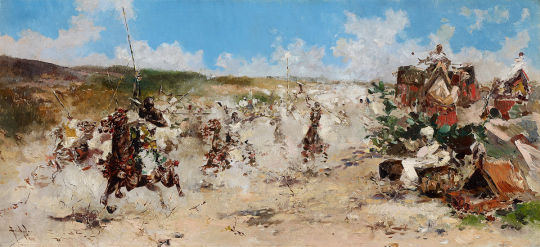
Salvador Sánchez Barbudo, The Game of Gunpowder, ca. 1900, oil on panel, 36 x 78 cm, Carmen Thyssen Museum, Málaga
Source: Wikimedia Commons
#art#painting#salvador sánchez barbudo#early 20th century#1900#1900s#20th century#20th century art#20th century painting#history painting
1 note
·
View note
Photo
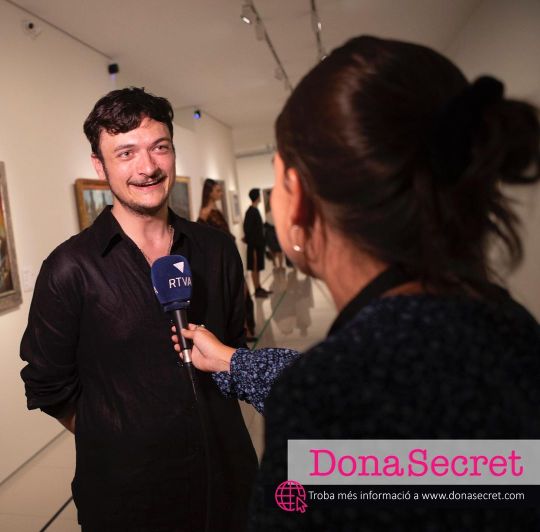
Cette semaine Opportunities voudrait mettre à l’honneur un jeune fashion designer andorran, dont la Principauté d’Andorre et ses habitants (dont nous sommes aussi) sont fiers de compter parmi eux. Le nom de ce styliste prometteur? Joan Font. @joanfont Joan a présenté son premier défilé de mode le 2 juillet au musée Carmen Thyssen @cthyssenandorra d’Andorre à Escaldes-Engordany et dont le thème était « La ville de la mode. L'impressionnisme entre l'aiguille et le pinceau » Depuis le front row et avec quelques privilégiés nous avons assisté à ce sublissime défilé. Tout les jours nous vous présenterons en story ses pièces maitresses. Merci Joan de nous avoir fait rêver, tes créations étaient plus belles les unes que les autres. Crédit photos @donasecret Aquesta setmana, Opportunities vol homenatjar un jove dissenyador de moda andorrà, de qui el Principat d'Andorra i els seus habitants (inclosos nosaltres) estan orgullosos de comptar entre ells. El nom d'aquest estilista emergent? Joan Font. @joanfont Joan va presentar la seva primera desfilada de moda al Museu Carmen Thyssen @cthyssenandorra d'Andorra d'Escaldes-Engordany amb el tema "La ciutat de la moda". Impressionisme entre l'agulla i el pinzell" Des de primera fila i amb uns quants privilegiats vam assistir a aquesta sublim cercavila. Cada dia us presentarem en història les seves obres mestres. Gràcies Joan per fer-nos somiar, les teves creacions eren més boniques les unes que les altres. This week, Opportunities would like to honor a young Andorran fashion designer, of whom the Principality of Andorra and its inhabitants (including us) are proud to count among them. The name of this up-and-coming stylist? Joan Font. @joanfont Joan presented her first fashion show at the Carmen Thyssen Museum of Andorra @cthyssenandorra in Escaldes-Engordany and whose theme was “The city of fashion. Impressionism between the needle and the brush" From the front row and with a few privileged people we attended this sublime parade. Every day we will present you in story its masterpieces. Thank you Joan for making us dream, your creations were more beautiful than each other. (à Museu Carmen Thyssen Andorra) https://www.instagram.com/p/CgbNcEXNMRZ/?igshid=NGJjMDIxMWI=
0 notes
Text

The Visitation, Gerónimo Antonio de Ezquerra, ca. 1737
#Advent#art#art history#Geronimo Antonio de Ezquerra#religious art#Biblical art#Christian art#New Testament#Gospels#Visitation#Spanish art#18th century art#Carmen Thyssen Museum
346 notes
·
View notes
Photo
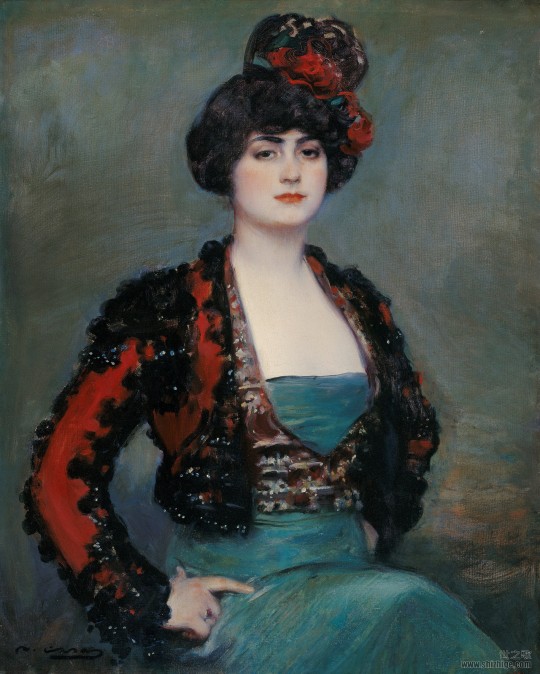
source: bishopsbox
Ramón Casas, Julia, circa 1915. Carmen Thyssen Museum, Málaga.
22 notes
·
View notes
Photo

1 note
·
View note
Text
Andorra is beautiful
Some beautiful places in Andorra
Les Escaldes
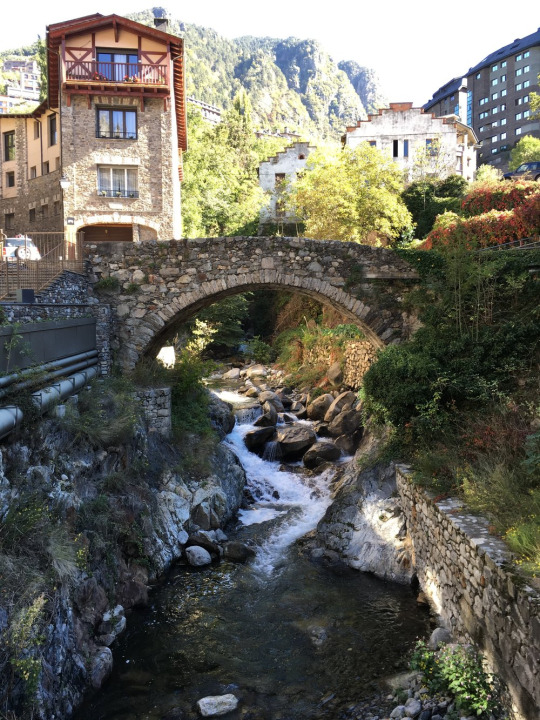
https://www.tripnwithtrina.com/blog/tag/Andorra
Les Escaldes is a small town located 2 kilometers east of the country’s capital, Andorra la Vella. The area is famous for its hotsprings and its waters containing a high amount of sulphur and nitrogen. These waters are perpetually warm with temperatures ranging from 22 °C / 72 °F to 66 °C / 151 °F. The Romans used the springs for their medicinal healing qualities. Other than that, the place is known for its traditional Santa Anna dance as well as attractions like the Museu Carmen Thyssen Andorra and the Saint Peter the Matyr Catholic Church.
Sant Esteve

Maria Rose Ferre: https://www.flickr.com/photos/54943216@N08/7870859794
The Church of Sant Esteve is located in the capital, Andorra la Vella, on Plaça del Príncep Benlloch. It was built in the 12th century, but transformed in the 20th century with the construction of a new nave and the reorientation of the Church Axis. The Bell Tower and the apsis of the original building were preserved.
Sanctuari de Meritxell
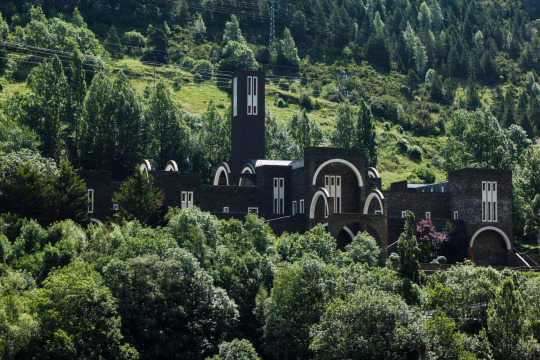

Photos by Ricardo Bofill (who was also the architect)
Situated in the parish of Canillo in Northern Andorra, the Sanctuary of Meritxell stands as one of the country’s most significant religious sites. It is home to various Statues of the country’s Patron Saints. Like Sant Esteve, the Sanctuary of Meritxell is a modern reinterpretation of the original. In this specific case, the original church was destroyed by a fire in September 1972, restored and the Chapel of Santa Maria de Meritxell was turned into the “Meritxell Memoria” exhibition hall. The new Sanctuary (seen above) was inaugurated in 1976.
Casa d’Areny-Plandolit

https://commons.wikimedia.org/wiki/File:Areny-Plandolit_casa_Ordino_(Andorra).jpg
Built in 1633, Casa d’Areny-Plandolit is a former manor, now functioning as a museum in Ordino. The building gets its name from the family that resided in it, Areny-Plandolit, key figures in Andorra’s iron and steel industry between the 16th and 19th century. The most famous member of said family was Guillem Ardeny-Plandolit, leader of the New Reform (essentially the replacement of the aristocratic oligarchy and the establishment of the foundation of the Constitution) in 1866. In the 20th century, the manor was repurposed to serve as a museum of the natural sciences, and then again in 1972, to serve as a monument / museum (history of the house and family) and Andorra’s only surviving example of a stately home.
Madriu-Perafita-Claror

https://www.mustseespots.com/andorra/madriu-perafita-claror-valley
Madriu-Perafita Claror Valley is Andorra’s first and only UNESCO world heritage site and covers 10% of the country’s surface. It is shaped by cliffs and glaciers and remains Andorra’s second largest watershed. People have lived here since the 13th century and plenty of refuges can be found all around.
The Nobility of Time
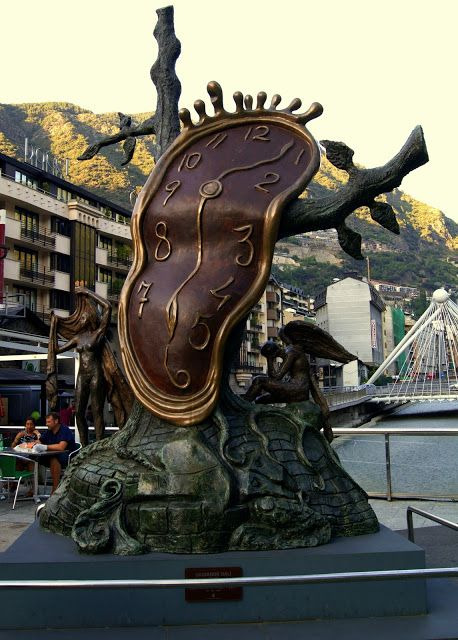
https://barcelonadailyphoto.wordpress.com/category/dali/
Right in the heart of Andorra’s capital, Andorra la Vella, an original sculpture of Spanish Artist Salvador Dali can be found, called The Nobility of time (”La Noblesse du Temps”). It is around 5 meters tall and is situated in the Plaça de la Rotonda. Dali’s agent, Enric Sabater, gifted it to Andorra’s government.
#andorra#salvador dali#nobility of time#andorra la vella#unesco#les escaldes#earth#beautiful places#europe#landscapes
22 notes
·
View notes
Note
spare neon lore? i love her
My brain shut down for a moment because I wasn’t sure what to say that I haven’t before, so I’m going to try to explain things I haven’t before, if I repeat myself forgive me :v
Careful what you wish for tho, here comes a longass rant, and I mean LONG
·Something I’ve barely talked about is Neon’s residences. She spent her childhood in Spain, in the Prieto Manor, big enough for her, her granparents and her uncles to live in, and still have much space to spare. The land around it is really large, with a field of almond trees that turn everything pink when in bloom, so part of their income comes from almond production. They also have different cultives, mainly to substain themselves, because her family isn’t exactly beloved, as in many think they’re better of dead. They also have vineyards with grapes specifically for wine production. Another way of income they have is with art. The manor has a room full of (mostly) spanish art pieces that they sell from time to time. Neon has sold pieces to the Thyssens, and donates some to certain collections when the museum opens later on.
Those are the things they’re known for, there’s rumors that they also deal with illegal stuff, but nobody can say for sure. Once they’ve graduated, Neon hires Jae to work under him. If you ask him, he says he’s the “financial administrator”, but he most definetly works as something else.
All their lands are surrounded by a thick forest charmed to work like a labyrinth. Only family members know the way, and there’s no chance of finding your way out to the other side by luck, the labyrinth will throw people away the way they came in. The forest is also full of stray dogs along with other average animals you’d find there. Neon has spent so much time in that forest she knows the whole place by memory, not just the way in and out, so it’s impossible for her to get lost.
On that note, Neon showed early signs of magic, many of which resulted in selfinjuries, like things exploding or catching fire when holding them or around her, as well as being capable of making dogs do her bidding unknowingly, thinking they just really liked her and could understand her.
Her second residence is in England, Yorkshire. Living in her old granparents house, in a small, mostly full of wizards town. A pretty big two story victorian house, Neon didn’t like it nearly as much as the manor, mainly because it has a small garden, unlike the big fields they have in Spain. Still she made it work for herself. Currently she lives with her uncles in their house, down the street, but she drops by from time to time keep the house clean.
· If it weren’t for her grandfather, they would all be spoiled brats. Coming from nothing, Gonzalo Prieto made sure he taught them humility amongst other things. Rocio was a pretty strict mother and it rubbed off on them, making them strict mothers in turn. Teaching to their kids was pretty serious, things like writing with good caligraphy, reading, maths, history and art, (no wonder Neon hates paying attention yet gets good grades, she’s used to studying). Carmen sent Nuria and Neon to get some work on summer after their third year as a way for them to learn what she and Luisa had learn working with their father. With him being gone, Carmen decided the best way for them to learn what they did was to just work, so Nuria ends up in a bakery, where she learns not to burn the whole kitchen, and she made the bakers cry a lot with whatever she ended up cooking until she got decent. Neon on the other hand went to a blacksmith and just like Nuria, at the beggining it was a complete disaster. After a month of just cleaning and watching she got to try making a knife blade and it ended horribly, and broken. The next year she managed to make an actual knife blade that could cut. By year 6 she’s managed to forge many swords, they’re not the finest work, but they’ll do for this one spell she’s been planing to invent for a while. She uses it for the first time against her uncle.
·There’s many projects unfinished saved away by family members, mainly because they died before they could get midway or start. Neon’s dad had blueprints of a house on the beach he wanted to make for the family to go on vacation. Neon also starts her own project when she’s 14/15, her own scholarship for orphan wizards. Romul was the one who encouraged her to go through with it, and joined in the idea, her scholarship centered in Hogwarts students, and his in Beauxbatons students.
·Here’s an essay I wrote some time ago about character soundtrack themes, behold:
When creating the themes for the Prieto members (Neon, Nuria, Laura, Argon and Narciso) they all need one intrument in common that ties them together, the organ. The organ is the one instrument all members learn to play from a young age and they have one in the Prieto manor. This one intrument plays along with the motif chosen for them. The Dies Irae. The Dies Irae is an hymn in latin about judgement death, and is used frequently in media to signify death, this makes reference to the fact that all the family has a reputation of commiting homicides and the fear we see in the main four that their uncle is going to kill them. All the titles make allusion to church and religion. Although they are not religious, the play comes from the fact it all seems to go beyond what they can choose, as if a bigger force decided their fates from the start, like a marciless god, and the darkness of the songs plays more like requiems than character themes.It also rounds up with their symbol, the church grimm.
Each of them get their own special instruments within their themes, so:
Neon's themes would be:
-Church: composed with organ, violin (another instrument she plays) and some percussion, it's sombre and dark and is usually played when Neon is alone, either figuring out mysteryes around her or in introspection scenes.
- Grimm's wail: composed with an organ, violins and double bass, and strong percussion like a bass drum, it's a reprise of church meant for action scenes like duels, specially the one's within storyline, like the fight with the ice knight or the dragon.
Nuria's themes would be:
-Shrine: composed with organ and some acoustic guitar. it's a simple theme made for scenes where Nuria (or other members) are seen contemplating choices, past memories, etc. It has a certain nostalgia to it
-Golden cross: composed of just organ and electric guitar, it's a more rebelious theme played for Nuria's duels and stronger moments of emotion, the change of guitar mimics her change from sweet and docile to determined and more "violent"
Laura's themes would be:
-Faith: composed with organ alone it's a soft sad melody that goes along her guilt of having lost Argon and her denial of involving herself with Neon and Nuria's life out of fear of screwing up and losing them too. It starts out quite depressing and builds up to a darker tone, but always quiet like her, as if the melody also tries to hold in rage.
-Sin: another reprise of the original (Faith), made with organ and heavy percussion, brass drums and kettleddrums, used specially in moments of high tension, the closer she is to finding her uncle, the longer we hear this piece.
Argon's themes would be:
-Finding Solace: We hear this song in flashbacks. Depending on who is remembering we hear one part or another. Made of organ and harp at the begining, it's the part that plays on Neon/Nuria/Laura's memories of him, sweet and naive, and organ and brass air instruments in later parts are used in memories by Duncan/Rakepick/anyone who dealt with him when he was manipulating other's/doing shady stuff, more sincere but dark.
-Broken Prayer: made with organ, violins and strong percussion in paralel's Neon's theme "Grimm's wail", also used on more intense scenes.
Narcisso has one theme:
-Lost religion: made up of organ alone and one drum set. Plays with both the Dies Irae and a couple of notes that remind of the theme song of The phantom of the opera, playing both with death and mystery as to what this character really wants and seeks.
The family has it's own theme, played only twice in full. Made up of organs, electric guitar, violins and percussion intruments plays like a violent, dark orchestra, with punctual moments of choral voices singing as if a church choir, giving it a more gloom feel. The two instances played in full are in the memory of Rocio losing all her siblings and father, and the start of the battle between Narciso and his nieces. Small parts may be heard in scenes where Neon and Narcisso clash, like the river incident or when he injures her leg before year 6.
There could be more themes, but these are the most important ones I thought about.
- - - - - - - - - - - - - - - - - - - - - - - - - - - - - - - - - - - - - - - - - - - - - -
I hope this was enough for now
#mucho texto#anon ur in for a looong ride#idk if anyone will actually read this all#hogwarts mystery#hphm#neon welkin#Anonymous
25 notes
·
View notes
Text
The Events of Good Friday Depicted in Italian Medieval, Renaissance and Baroque Art

Good Friday is traditionally a day of contemplation, penance and the commemoration of the Crucifixion of Christ.
The events of the first Good Friday, began early that long-ago morning with Jesus being taken to stand trial before Pontius Pilate, governor of the Roman province of Judaea (below).

Because Pilate could find no reason to charge Jesus, he was then sent to Herod, who sent him back to Pilate.
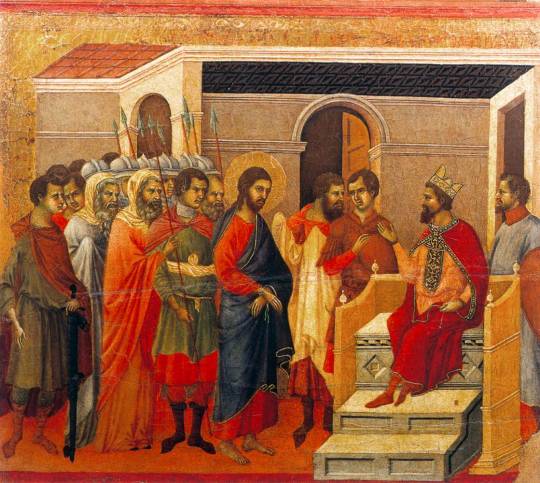
Although Pilate still considered Christ innocent, he was swayed by the crowds and sentenced Jesus to death. Below he is shown washing his hands of the situation.

Prior to execution, Christ was subjected to various tortures including flagellation (below), crowning with thorns (below) and bearing his own cross (below).


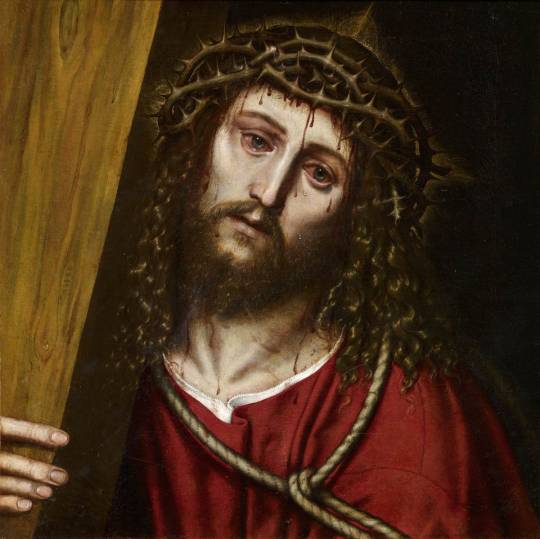
When Jesus arrives in Calvary, he is hoisted onto the cross and nailed upon it (below). A sign was attached to the construction that read, “INRI,” which stands for Iesus Nazarenus Rex Iudaeorum (Jesus of Nazareth King of the Jews). Despite his agony, Jesus pleads, “father forgive them, they know not what they do.”
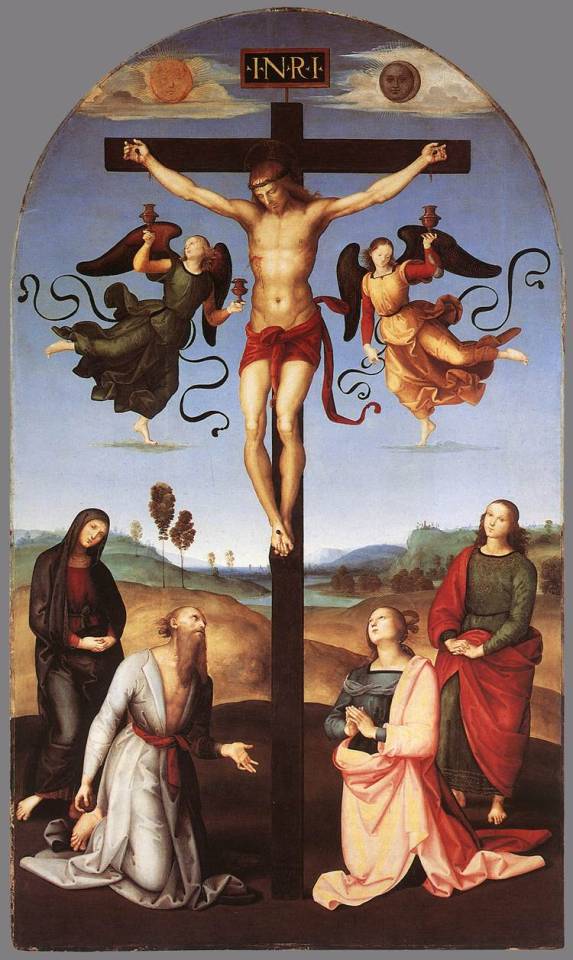
While he is slowly dying, Jesus is insulted, pierced in the side with a sword and the soldiers cast lots for his clothing. According to scripture, the sky darkened and Christ is said to have cried out, “My God! My God! Why have you forsaken me?” And being thirsty, he is passed a water-filled sponge. Realising that the end of his earthy life is fast approaching, Jesus proclaims, “It is finished,” and then, “Father, into your hands I commit my spirit.” And with these words, he died.
Jesus was then taken down from the cross (below), his body prepared for burial (below) and finally, he was entombed (below).
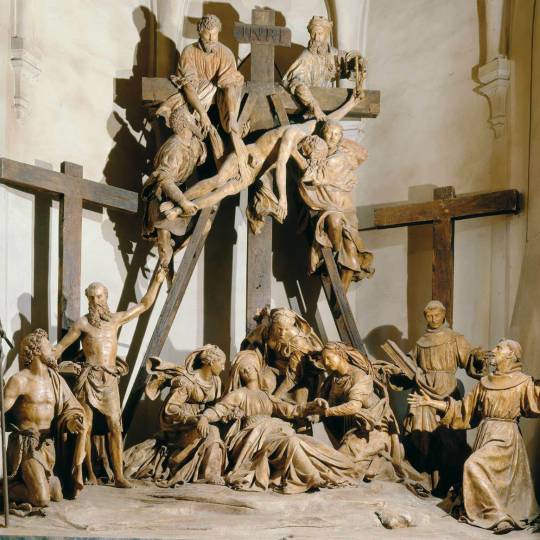


Images:
Michelangelo Buonarotti, Christ Crucified, 1492, polychromed wood, Santa Maria del Santo Spirito, Florence. Photo Credit: Alberto Pizzoli/AFP/Art Daily.
Donatello, Christ Before Pilate, 1460-65, bronze, San Lorenzo, Florence. Web Gallery of Art.
Duccio di Buonisegna, Christ Before King Herod, on the reverse side of the Maestà, 1308-1311, tempera on wood, Museo dell'Opera del Duomo, Siena. Web Gallery of Art.
Giambologna, Pilate Washing His Hands, 1598, bronze, Soccorso Chapel, Santissima Annunziata, Florence. Web Gallery of Art.
Piero della Francesca, Flagellation of Christ, 1468-1470, oil and tempera on panel, Galleria Nazionale della Marche, Urbino. Wikimedia Commons.
Caravaggio, The Crowning with Thorns, c. 1602-1604 or 1607, oil on canvas, Kunsthistorisches Museum, Vienna. Wikimedia Commons.
Niccolò Frangipane, Christ Bearing the Cross, 1574, oil on canvas, Museo Carmen Thyssen, Málaga. Web Gallery of Art.
Raphael Santi, Crucifixion (Città di Castello Altarpiece), 1502-03, oil on wood, National Gallery, London. Web Gallery of Art.
Antonio Begarelli, Deposition, 1530-31, terracotta, San Francesco, Modena. Web gallery of Art.
Francesco Bassano, The Lamentation of Christ, 1582-85, oil on slate, private collection. Web Gallery of Art.
Caravaggio, The Entombment, 1602-03, oil on canvas, Pinacoteca Vaticana, Rome. Web Gallery of Art.
References:
Luke 23: 1-46. Matthew 26 and 27: 1-54.
Posted by Samantha Hughes-Johnson.
#good friday#medieval italian art#renaissance italian art#baroque italian art#wooden sculpture#bronze sculpture#terracotta
43 notes
·
View notes
Text
Málaga (AGP)
Málaga was my first destination; it’s a small city which I felt really comfortable with since the first day and it was pretty easy to move around since you don’t have to take the public transportation unless you’re too far from the city center or too lazy to climb up the mountain of Gibralfaro, which is a good hike and fun exploring.
I pretty much been wandering around the town since I haven’t planned anything or even check the must-see places. So I started to walk the Calle Larios, is a pedestrian and shopping street of Málaga and lucky me it was decorated with it’s Christmas lights! So after checking some local stores and a quick lunch, I arrived to the Plaza de la Constitución the main town square which it was also known as “Plaza de las Cuatro Calles” (Four streets square), among the buildings that surround the plaza is the Casa del Consulado (Mayor’s home) which is now a tourist office and the Iglesia del Santo Cristo de la Salud. Moving along the street you’ll also find the Carmen Thyssen Museum, as I kept going into its streets aimlessly in an unassuming narrow street in the old Jewish quarter, at just few meters away from the Picasso Museum is the beautifully 18th century building housing authentic Arabic Baths for a real ‘hammam’ experience. When night fell I went back out of the hotel to see the Christmas light show on Calle Larios, which was magnificent.

On day two I already knew more or less where else to start and what places to visit beyond the center so I went back to Plaza de la Constitución and enjoy a continental breakfast at Café Central Málaga, and if you’re a huge fan of coffee as me, the the tiled coffee menu on the wall is going to really excite you, and it makes for a great Instagram photo, too. This time I decided to visit the coast that along the way you find the Catedral de la Encarnación de Málaga, a really must see when in Málaga, stunning interior with amazing craftsmanship and other than the grandiosity it is a good example of a well-preserved and well-organised landmark. Down the street would be the urban park Parque de Málaga and on the other side of the road its harbour Port of Málaga with the ‘Big Wheel’, walking by the seafront Paseo del Muelle Uno led me to this neighbourhood called La Malagueta where the Plaza de Toros and Playa la Malagueta are located. And in the upper part of the neighbour is the Castillo de Gibralfaro, a historic fort has protected Málaga and it’s harbour for hundreds of years. The long climb to the top is worth the effort and the views are spectacular! **two tips: wear good shoes and carry zero.**
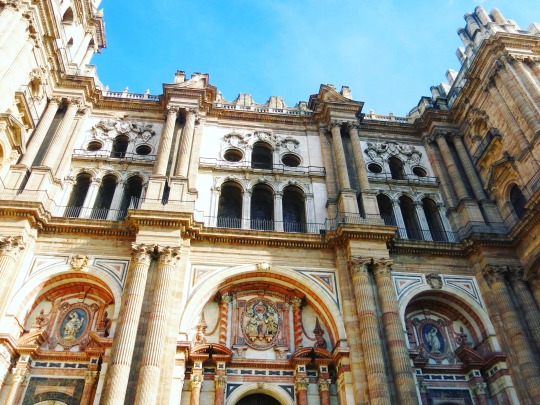
And on my last day I woke up early and went to the Arabic baths center “Hammam Al Ándalus Baños Árabes” that I found the first day since it really caught my attention and making the reservation later that same night. It was a wonderful antidote after those long days of sightseeing and busy shopping.
-
You can find more photos on my IG: @ bidibidobidiboo
3 notes
·
View notes
Text

Julio Vila y Prades.
Portrait of Elena and María (1908).
Oil on canvas 164 x 189 cm.
Portrait.
Represents the daughters of Joaquín Sorolla in Valencian costumes.
The original version belongs to Joaquín Sorolla. (Unexposed Workart, private collection)
Representa a las hijas de Joaquín Sorolla con trajes valencianos.
La versión original pertenece a Joaquín Sorolla. (Obra no expuesta, colección privada)
📍 Museum Carmen Thyssen, Málaga, Spain.
#iamainhoa#art#arte#painting#paint#fan art#inspiration#pintura#retrato#portrait#sorolla#joaquín sorolla
2 notes
·
View notes
Photo

22 October 2012 | Baroness Carmen Thyssen-Bornemisza, Cartier/s international President and CEO Bernard Fornas and Charlotte Casiraghi attend the "El Arte de Cartier" exhibition opening at the Museum Thyssen Bornemisza in Madrid, Spain. (c) Carlos Alvarez/Getty Images
#Baroness Carmen Thyssen Bornemisza#Bernard Fornas#Charlotte Casiraghi#Monaco#2012#Carlos Alvarez#Getty Images
0 notes


